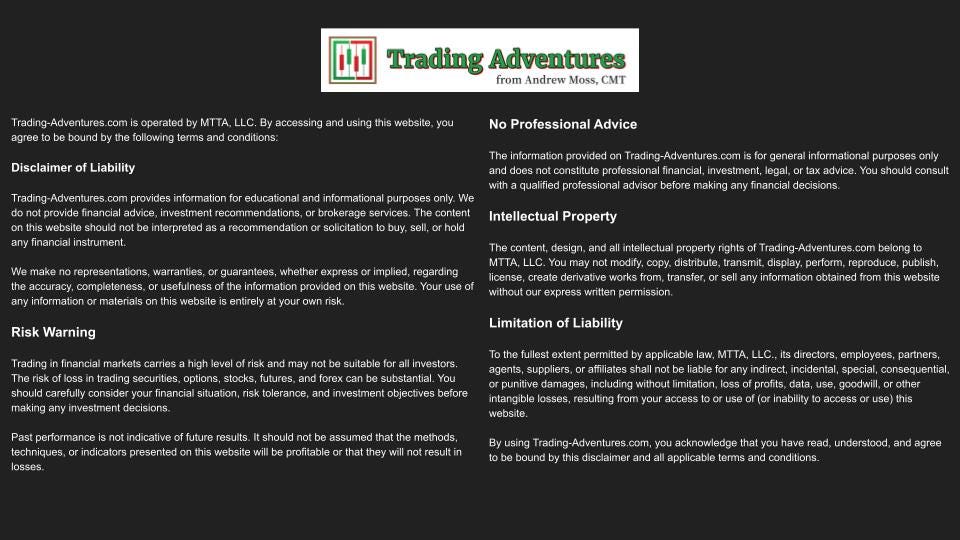The Path of Least Regret
How to manage trades when perfection isn’t an option — and preserve emotional capital along the way.
There’s a certain kind of trade we all dream about.
You get a clean entry.
The stock starts working right away.
You manage it with clarity and discipline.
You hit your target, book the profit, and watch as price retraces perfectly back to your entry.
You feel like a genius.
You timed it. Nailed it. Maxed it.
That’s the trade that makes you feel like you’ve mastered the game.
But here’s the question:
How often does that actually happen?
Exactly. Almost never.
That “perfect trade” is the unicorn. It exists, but rarely.
And when trades don’t play out that cleanly — how do you feel?
You hold too long and give back profits → “I should’ve sold.”
You sell too early and miss the big move → “I should’ve held.”
Either way, regret creeps in.
The Hidden Cost of Regret
Here’s what doesn’t get talked about enough:
Regret bleeds into the rest of your trading.
It clouds your judgment.
It chips away at your confidence.
It drains your emotional capital.
This is why I’ve come to believe that managing a winning trade is one of the hardest parts of trading.
Not technically — emotionally.
Which is why I’ve stopped aiming for perfect.
Instead, I try to find what I call:
The Path of Least Regret.
“Sell Some and Hope You’re Wrong”
That’s the advice a veteran trader once passed down to me.
I didn’t understand it at first.
But now I live by it.
It means trimming some profits early, knowing full well the trade might keep running.
It means holding on to a piece with structure intact — even when you’re tempted to book it all.
It means accepting you won’t get the exact top or bottom… and that’s okay.
You sell some — and hope you’re wrong…
Because being wrong in that moment means the trade kept working, and you still had skin in the game.
This isn’t about being soft.
It’s about preserving your edge — your mental edge.
Emotional Capital Is a Finite Resource
When you protect your emotional capital, you trade sharper.
You stay connected to your process.
You don’t spiral into revenge trades or decision fatigue.
The Path of Least Regret isn’t a strategy — it’s a mindset layer that sits on top of your strategy.
And it’s one of the best tools I know for staying in the game over the long haul.
Thanks for reading.
If you’ve ever found yourself frozen in that “Should I book it? Should I hold?” zone, I’d love to hear how you navigate it.
What’s your path of least regret?
Let me know in the comments or shoot me a reply.
📩 Like these breakdowns?
Trading Adventures is a “pay-if-you-want” publication.
All posts are free and public — no paywalls.But if these ideas help you trade with more clarity and confidence, consider a paid subscription:
→ $7/month or $84/year
→ Supports the work
→ Keeps the signals flowingBecome a Paid Subscriber →
Looking For More?
Elevate Your Trading Adventure Even Further With These Offerings.
EpicTrades Options Newsletter
Real-time trade ideas and insights, providing actionable trading insights focusing on options trades with short-term horizons, aiming to capitalize on weekly market movements.
The approach includes detailed reasoning for trades, specific options, and profit targets. It focuses on quick gains with a minimal time commitment from subscribers.
The Inner Circle
The Inner Circle is a Virtual Trading Floor (VTF) at T3 Live. I’ve been working and trading with this group since 2022. You may have noticed the logo in the watermarks on my charts.
Founded by David Prince and led by him, Rick March, and Kira Turner, the Inner Circle is a community of elite traders, including hedge fund managers, family office heads, corporate executives, financial advisors, and even professional poker players.
Fundamental, Macro, and Technical Analysis all combine to find and discuss the best opportunities in current markets.
The Disclosures
***This is NOT financial advice. This is NOT a recommendation to buy, sell, or trade any security. The content presented here is intended for educational purposes only.








I have held a ticker (crypto) that went to zero 3 times, my emotional capital = dead inside